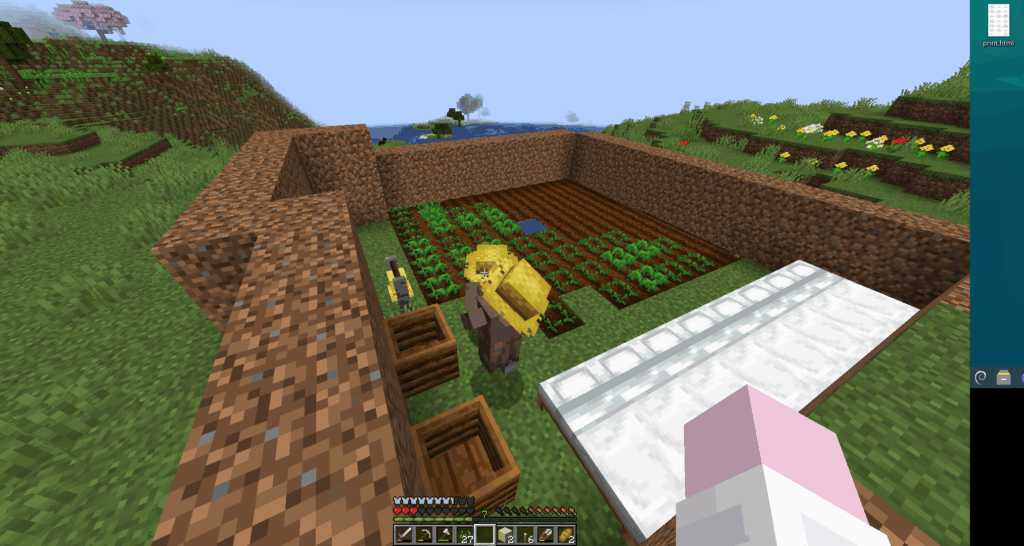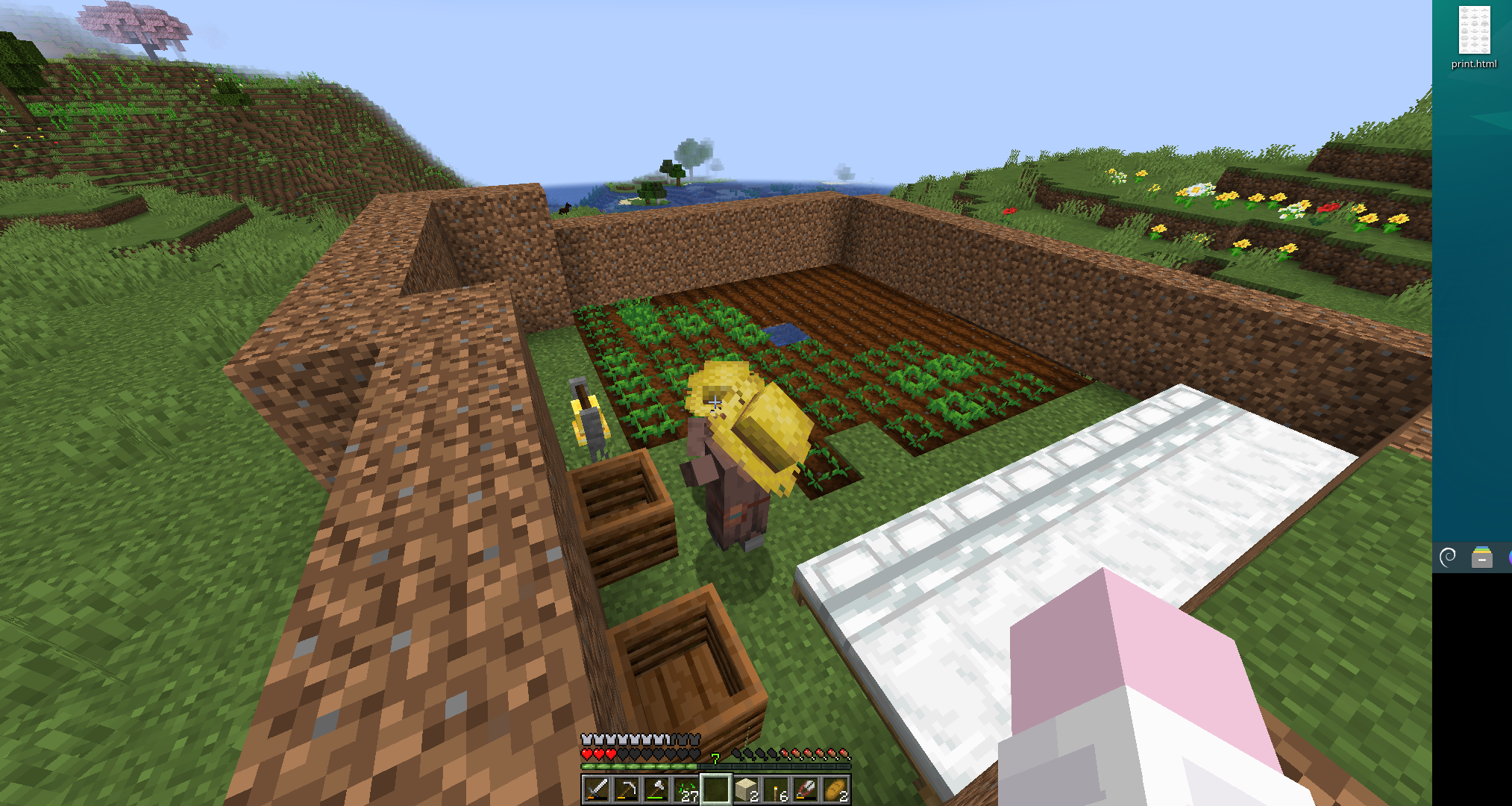
Why Won’t My Villagers Breed? Troubleshooting Minecraft’s Population Problem
Minecraft’s villagers are essential for trading and establishing thriving communities within your world. However, sometimes, your villagers just… won’t breed. This can be incredibly frustrating, especially when you’re trying to expand your village or secure specific trades. Understanding the factors that influence villager breeding is key to solving this problem. This comprehensive guide will walk you through the common reasons why villagers won’t breed and provide actionable solutions to get your population booming.
Understanding the Basics of Villager Breeding
Before diving into troubleshooting, let’s cover the fundamentals. Villager breeding in Minecraft isn’t random; it’s governed by specific conditions that must be met. Ignoring these conditions is a common reason why villagers won’t breed.
Essential Requirements for Breeding
- Valid Beds: Villagers need beds to sleep in, and for breeding, there must be more beds than villagers. Each baby villager requires its own unclaimed bed.
- Food: Villagers must have food in their inventory to initiate breeding. They require either bread, carrots, potatoes, or beetroots.
- Willingness: Villagers need to be “willing” to breed. This is determined by whether they have enough food and if the game detects enough beds.
- Mob Griefing Enabled: If mob griefing is disabled, villagers cannot pick up food, preventing them from breeding.
Common Reasons Why Villagers Aren’t Breeding
Now that we’ve established the basics, let’s explore the most frequent causes for breeding failures. Understanding these reasons is crucial for effective troubleshooting when your villagers won’t breed.
Insufficient Beds
This is arguably the most common culprit. Each villager, including potential baby villagers, needs a bed. If you only have the same number of beds as villagers, they won’t breed. Ensure you have at least one extra bed per desired baby. Place the beds within the village boundary, which is defined by the presence of doors and workstations.
Lack of Food
Villagers need food to become willing to breed. They require either 12 bread, 12 carrots, 12 potatoes, or 12 beetroots in their inventory. They will share food with each other to initiate breeding. Make sure your villagers have access to a steady supply of food. Farming is the best way to ensure your villagers won’t breed because of hunger.
Crowded Conditions and Pathfinding Issues
Villagers need space to move around and interact with beds and each other. Overcrowding can hinder their ability to pathfind to beds and food sources. Ensure the village has sufficient open space. Also, make sure there are no obstructions blocking their path to the beds. Obstacles can prevent the villagers won’t breed.
Mob Griefing Disabled
If the `mobGriefing` game rule is set to `false`, villagers cannot pick up food. This will prevent them from breeding. To enable mob griefing, use the command `/gamerule mobGriefing true`. This is a crucial step if your villagers won’t breed unexpectedly.
Village Boundary Issues
The game defines a village based on the presence of doors and workstations. If the beds are not within the recognized village boundary, the villagers won’t acknowledge them for breeding purposes. Make sure the beds are close enough to the village center and that the village is properly defined.
Villager Inventory Management
Sometimes, villagers can hoard food without sharing it. This can prevent breeding even if there appears to be enough food available. You can resolve this by breaking and replacing workstations, forcing villagers to reset their inventories. After resetting, ensure they have access to food again. This is a more advanced step if your villagers won’t breed after addressing other simpler issues.
Nitwit Villagers (Green Robes)
Nitwit villagers, identified by their green robes, cannot work or breed. They simply wander around the village. Their presence doesn’t directly prevent other villagers from breeding, but they don’t contribute to population growth. Make sure you only count the working villagers when determining the number of beds needed.
Time of Day
Villagers typically breed during the daytime. If you’re observing them at night, they will be focused on sleeping rather than breeding. Ensure you’re monitoring their behavior during the day to accurately assess whether they are breeding or not. This is especially important for observing whether your villagers won’t breed because of time factors.
Game Bugs or Glitches
While less common, bugs can sometimes interfere with villager breeding. Ensure your game is updated to the latest version, as updates often include bug fixes. If you suspect a bug, try restarting your game or even your Minecraft server.
Troubleshooting Steps: A Practical Guide
Let’s outline a step-by-step approach to resolving the “villagers won’t breed” issue.
Step 1: Bed Check
- Count the number of villagers and beds. Ensure there are more beds than villagers.
- Verify that the beds are within the village boundary.
- Make sure nothing is obstructing the villagers’ access to the beds.
Step 2: Food Supply
- Provide villagers with at least 12 bread, carrots, potatoes, or beetroots each.
- Observe if they are picking up the food. If not, check if `mobGriefing` is enabled.
- Consider setting up automatic farms to ensure a constant food supply.
Step 3: Space and Pathfinding
- Ensure the village is not overcrowded.
- Clear any obstructions that might be blocking the villagers’ paths to beds or food.
- Consider expanding the village area if necessary.
Step 4: Game Rules
- Use the command `/gamerule mobGriefing true` to enable mob griefing.
- Double-check any other gamerules that might affect villager behavior.
Step 5: Villager Inventory Reset
- Break and replace workstations to reset villager inventories.
- Redistribute food after the reset.
Step 6: Monitor and Observe
- Observe the villagers during the daytime.
- Look for hearts appearing above their heads, indicating they are willing to breed.
- Be patient; breeding might not happen instantly.
Advanced Techniques for Villager Breeding
Once you’ve mastered the basics, you can explore more advanced techniques to optimize villager breeding and ensure your villagers won’t breed less often.
Iron Farm Integration
Integrating an iron farm with your village can provide a steady supply of iron, which you can trade with villagers for emeralds. Emeralds can then be used to purchase food from farmer villagers, creating a sustainable loop. This ensures your villagers won’t breed due to lack of resources.
Villager Trading Halls
Creating a dedicated trading hall allows you to easily access villagers with specific trades. This involves transporting villagers to a controlled environment where you can manage their professions and trades effectively. This requires careful planning to ensure your villagers won’t breed in unwanted locations.
Automatic Food Farms
Automating your food farms ensures a constant supply of bread, carrots, potatoes, or beetroots. This eliminates the need for manual farming and guarantees that your villagers always have enough food to breed. This is a key step to prevent your villagers won’t breed because of starvation.
Conclusion: Keeping Your Villagers Happy and Breeding
Troubleshooting why villagers won’t breed in Minecraft can be a complex process, but by understanding the underlying mechanics and following these steps, you can create a thriving village population. Remember to prioritize beds, food, space, and the correct game rules. With a little patience and effort, you’ll soon have a bustling community of villagers ready to trade and contribute to your Minecraft world. Happy breeding! Keeping your villagers happy is the key to making sure your villagers won’t breed less often.

